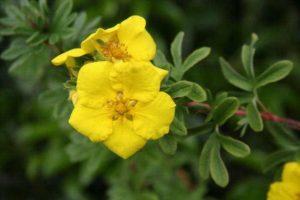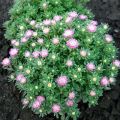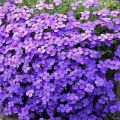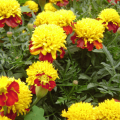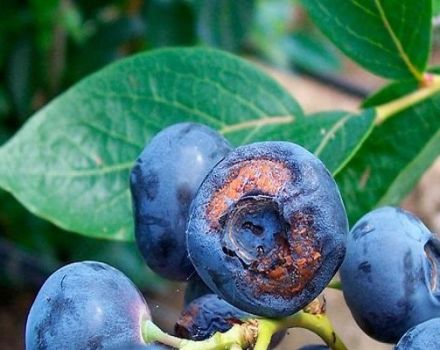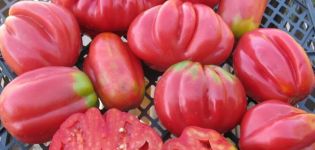Description of Alyssum varieties, planting, cultivation and care in the open field
The issues of care and planting of alyssum are of interest to beginners and experienced gardeners. This plant attracts a variety of colors, long flowering, simple agricultural technology and aroma. Its smell is hard to forget. It is very sophisticated and delicate. Alyssum flowerbed attracts bees to the orchard, this affects the harvest. The quality of pollination of apple, pear, stone fruit crops is increasing.
Content
- 1 Description
- 2 Types of flowers
- 3 Popular varieties
- 3.1 Snow carpet
- 3.2 Pink queen
- 3.3 Wonderland
- 3.4 Gold placer
- 3.5 Magic circles
- 3.6 Tiny Tim
- 3.7 Easter Bonnet Deep Rose
- 3.8 Princess in Pearl
- 3.9 Violet Konigin
- 3.10 Palette
- 3.11 Pink rug
- 3.12 Big Jam
- 3.13 Compactum
- 3.14 Citrinum
- 3.15 Fiore Rieno
- 3.16 Golden wave
- 3.17 The plenum
- 3.18 Easter hat
- 3.19 Giga
- 3.20 Aphrodite
- 4 Growing from seeds
- 5 How to plant in open ground
- 6 How to care properly
- 7 Nuances
- 8 Diseases and pests
- 9 Reproduction
- 10 Prevention
- 11 Combinations with other colors
- 12 Using
- 13 Answers on questions
- 14 Reviews
Description
Alyssum has other names. Many flower growers know it as a beetroot or stonemason. It is a genus of ground cover plants of the Cruciferous family. It includes at least 100 species. There are frost-resistant perennial varieties and more thermophilic varieties that are grown as annuals.
The plant is undersized, ground cover, the length of branched shoots is 10-40 cm. The root is fibrous. The lower part of the branches lignifies over time. Young shoots are covered with light fluff. The leaves are alternate, obovate, no petioles.
The bottom of the leaf plates are covered with gray or silvery villi. Inflorescences are formed at the end of May at the tops of the shoots. 4 petals form the flower cup. The color can be very different. In culture, alissum is:
- white;
- pink;
- purple;
- yellow;
- lilac;
- Violet.
The flowering period covers the whole summer. The fragrant flower attracts bees to the garden. By the end of summer, seed bolls are formed in place of pollinated flowers. The seeds are brown, small. Annual species are distinguished by longer flowering.
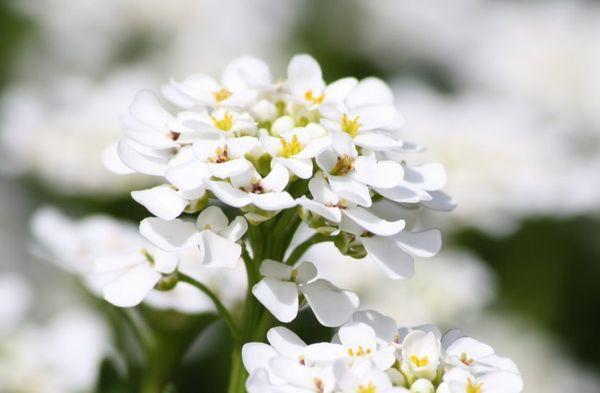
Types of flowers
There are at least 200 species of this plant. All varieties are characterized by unpretentiousness and a long flowering period.
Ordinary
The variety is grown as a perennial plant. Stems are short (10 cm), creeping, covered with gray-green oval leaves.At the ends of the shoots, apical shoots are formed, consisting of many yellow four-petal flowers.
Pyrenean
It is a dwarf herbaceous species that naturally lives in the Iberian Peninsula. The length of the shoots is 20 cm. The shape of the leaves is oval. They are fleshy, covered with fluff, and have a bluish tint. White flowers bloom in summer.
Variegated
Landscape designers love to include this variety in garden compositions. Its varieties are considered the most beautiful. The plant is perennial. The length of the shoots is 5-30 cm. The diameter of the spherical inflorescences is 25 cm. The flowers are yellow.
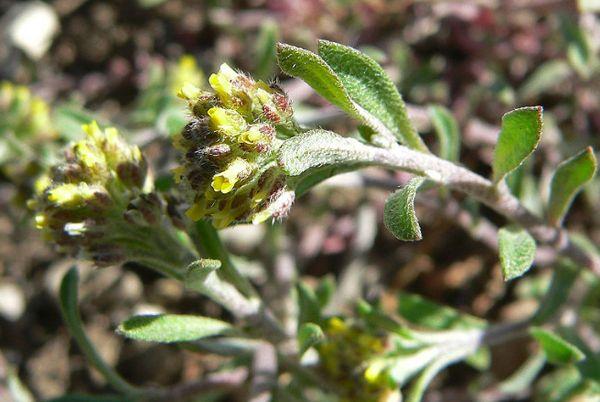
Krivostebelny
Dwarf perennial. The length of thin shoots does not exceed 6 cm. They are covered with oval gray-green leaves. The size of the inflorescences is small, the color is yellow.
Boletus
Stems are gray, lignified from below, up to 40 cm long, covered with light down.
Dagestan
Shoots 25 cm long, densely covered with narrow linear and spatulate leaves. The shape of the inflorescences is umbellate, the flowers are pale yellow.
Nautical
In temperate climates, this thermophilic species of alissum is grown as an annual. Stems creeping, rigid, short (20 cm), silvery due to pubescence. Flowering begins in June. The color of inflorescences in varietal varieties is varied:
- white;
- pink;
- lilac;
- purple.
Alyssum marine, growing in natural conditions, has white, lilac, white-lilac flowers.
Creeping
Under natural conditions, the perennial species is found in the mountainous and steppe regions of Eastern and South-Eastern Europe and Western Asia. Bushes 40-60 cm high are covered with gray-green leaves. At the bottom, they form a rosette. The inflorescences are elongated, composed of bright yellow flowers.

Mountain
Perennial frost-resistant variety. It begins to bloom at the end of April. Creeping shoots, 20 cm long. The leaves look gray due to the strong pubescence. The inflorescences are fragrant, bright yellow.
Ampelny
Spectacular plant with long, highly branching shoots. During flowering, it fills the air with a rich aroma. Varieties of ampelous alissum are grown in pots.
Silver
The tallest variety of alyssum. The length of the shoots reaches 80 cm. Flowering lasts 2-2.5 months. It starts in May and ends in July. The species was called silvery because of the small leaves - green above, gray-ash below.
Rocky
Bushes up to 40 cm in diameter form strongly branching shoots up to 30 cm long. The plant is perennial. To maintain decorativeness, it needs anti-aging pruning. Over time, the lower part of the branches is exposed.
Honey
Perennial about 25 cm high. Strongly branching shoots. The bushes are hemispherical. Leaves are elongated and form dense rosettes. Inflorescences are racemose, dense. Flowers are yellow, small. The flowering period lasts 1.5 months.
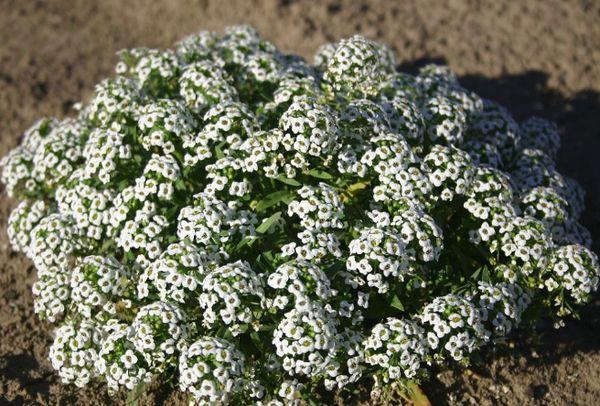
Popular varieties
Among flower growers, varieties are popular, which are obtained on the basis of rock and sea alissum. Bushes have different sizes and colors of inflorescences.
Snow carpet
Spectacular snow-white inflorescences form large (10 mm) flowers. The variety prefers sunny places, can grow on a rocky slope.
Pink queen
Blooming low bushes (10-20 cm) form colorful rugs in delicate pink-purple hues. The variety is planted along the paths, stony slopes are decorated.
Wonderland
The flowers are small, carmine pink. The bushes are neat, about 10 cm high. The plant is grown in a pot culture, used to decorate borders.

Gold placer
A creeping variety of alyssum. Rocky gardens are decorated with bright yellow inflorescences. Flowering bushes are spherical.
Magic circles
Shoots are grayish-green, 15 cm long. Inflorescences are light yellow, fragrant.
Tiny Tim
The length of the shoots does not exceed 8 cm. During flowering, dwarf bushes resemble sea foam. They are covered with numerous snow-white flowers.
Easter Bonnet Deep Rose
A variety belonging to the marine species of alyssum. The name translates to purple Easter hat. During prolonged flowering, the bushes are covered with lush bright pink inflorescences.
Princess in Pearl
Ampel plant. The inflorescences are purple. When grown on a flat surface, the flowers form a continuous bright carpet. In a flower pot, the variety looks even more delicious. Long flowered shoots resemble a waterfall.
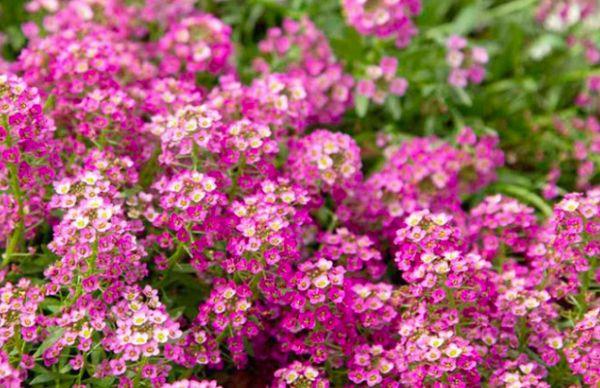
Violet Konigin
The variety was named the Purple Queen because of the color of the carpal inflorescences. Bushes are low (15 cm), neat, shaped like a ball.
Palette
The bushes are low, the stems are 10 cm long. The color of the flowers is very different: brown, crimson, yellow, red, white.
Pink rug
Shoots 12 cm long. There are many of them in the bush. During flowering, they form a solid purple carpet.
Big Jam
The flowers are large, white, lavender, purple or light lilac. The length of the stems is 35 cm.
Compactum
Alyssum is rocky. Bushes are low (18 cm), covered with bright yellow inflorescences.
Citrinum
Variety of rocky alissum, inflorescences are pale yellow.

Fiore Rieno
Variety of rocky alissum, golden-yellow inflorescences.
Golden wave
Grown as a perennial flower culture. The first flowering occurs in the 2nd year after planting. Inflorescences are golden yellow. The length of the shoots is 25 cm, the diameter of the bush is 40 cm.
The plenum
Terry inflorescences, bright yellow.
Easter hat
This is a series. It includes early flowering low-growing (10-20 cm) varieties. The range of colors is wide. The colors are saturated. The inflorescences are large, retaining decorative effect for a long time.
Giga
Fast-growing variety with highly branching stems and large inflorescences.
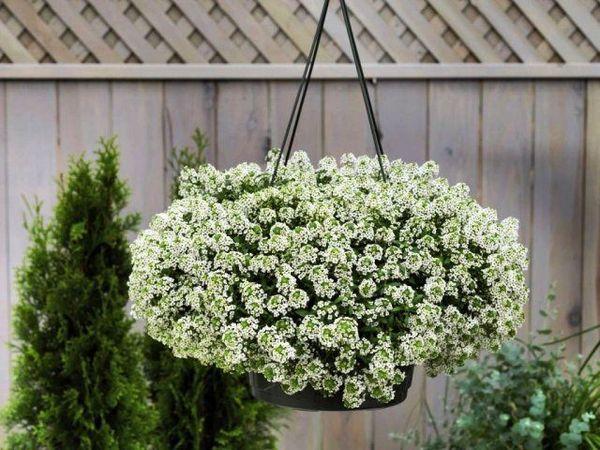
Aphrodite
Variety of alissum rocky. Prefers openwork partial shade in the middle of the day, fertile soil, moderate watering. Bushes are low, purple inflorescences. For abundant and long-term flowering, they are fed with complex fertilizers.
Growing from seeds
Alyssum seeds are very small. Perennial varieties are sown directly into the ground before winter or spring. Annual varieties are more often grown by seedlings.
Through seedlings
Alyssum seedlings bloom at the appropriate time for the variety (March, April). It is convenient to use when creating garden compositions.
Soil preparation
Alyssum's seedlings are small, so shallow transparent plastic containers with a lid are used for planting. The soil is taken light, nutritious. The package must be marked as neutral.
Seat selection
Any window will do if you have an LED lamp. The seedlings will have to be supplemented. At the same time, the lamp is placed low, 15-20 cm from the seedlings.

How to drop off
It is easier to sow alyssum in an ordinary way, therefore, shallow grooves are outlined on the surface of the soil. They are made at a distance of 3-4 cm from each other. Sprinkle the seeds with a thin layer of sand. The soil is moistened with a sprayer.
Seedling care
Until emergence, the container is tightly covered with a lid or a piece of cling film. Once every 2 days, they are slightly opened for airing so that mold does not form on the soil. At room temperature 18-20 ° C, small shoots appear on the 5th day.
Watering
Moisten the soil carefully. The seedlings are very delicate and small. They are all watered in different ways:
- syringe;
- a teaspoon;
- a small rubber bulb.
Temperature
Within a week after the emergence of seedlings, the seedlings are supplemented around the clock. The temperature is reduced to 18-20 ° C.
Picking
Seedlings dive 1-2 times. With a single transplant, seedlings in the 2-leaf phase are immediately planted in separate glasses. With a double pick, they are transplanted first into a common box, and after 2 weeks - into separate containers. Seedlings transplanted twice bloom faster.
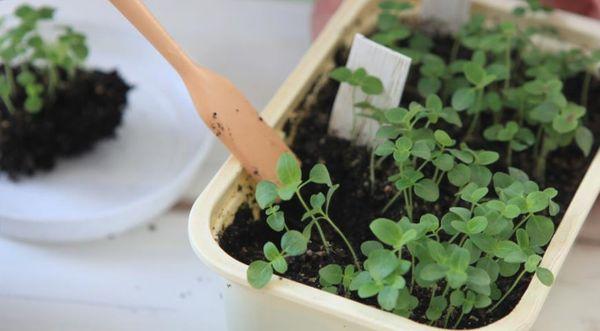
How to plant in open ground
One-month-old seedlings are transplanted to a permanent place using the transshipment method. The site is chosen in the sun or in partial shade.They are planted in shallow holes at a distance of 30-40 cm. Water the bushes. In hot weather, the first days are covered from the sun.
Sowing in open ground
Perennial beetroot varieties are propagated by direct planting of seeds in the ground. Sowing is carried out when the soil warms up and the daytime temperature does not drop below 15 ° C.
Timing
Sowing time depends on the climatic zone. In the middle lane, seeds are sown at the end of April, in Siberia - from May 1 to May 15. Seedlings appear in a week. Inflorescences bloom in 2 months. Flowering lasts until autumn.
Landing scheme
Dig up the earth before planting. Knead the lumps. Grooves are made. Spill them abundantly. The seeds are spread evenly. Sprinkle them with a mixture of garden soil, peat, sand, humus, taken in equal proportions.
Before the emergence of shoots, the flower bed is covered with a film. When planting quality seeds, seedlings appear in a week. Inflorescences form in 2 months. Seedlings are thinned out, taking into account varietal characteristics. The distance between the bushes should be 20 cm.
How to care properly
Caring for blooming alyssum is a pleasure. It takes a little time, does not differ in great complexity.
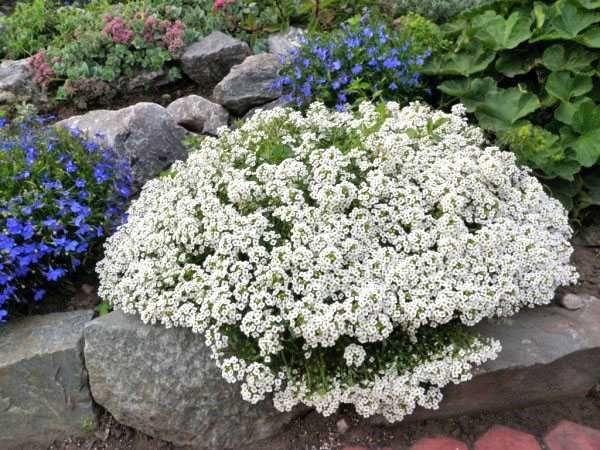
Watering
The duration and intensity of flowering depends on watering. With a lack of moisture, few flowers and many leaves are formed. The decorativeness of the bushes is reduced. To prevent this, the soil is moistened regularly, but moderately. With the correct irrigation scheme, the soil at a depth of 4 cm is always wet.
Loosening and weeding
Weed removal is carried out simultaneously with loosening the topsoil. They do this after rain or another watering.
Pruning
In the spring, sick and dry shoots are removed from perennials. Summer pruning has 3 goals. With its help, the decorative effect of the bushes is restored. Stimulates flowering. Prevents powdery mildew disease.
The procedure involves the removal of inflorescences that have lost their decorative effect, pruning the shoots to 7-10 cm. In varieties of rocky alissum, they are shortened by ⅓ of their length. Bushes cut off after flowering form new inflorescences.
Top dressing
If the soil is fertile, top dressing is carried out once in the spring. Stimulates the growth of vegetative mass with nitrogen fertilizer. Urea and flower fertilizer Agricola-7 are used. Add 1 tbsp to each bucket of water. l.
To increase decorativeness during the flowering period, alissum is fed twice with nitroammophos or Master fertilizer with the formula NPK 16:16:16 (10 l of water, 10 g of fertilizer). The interval between fertilization is 10-14 days.
Nuances
There are no special nuances in the cultivation of alissum. The ground cover bushes planted in a sunny corner of the garden bloom profusely all summer. In unfavorable weather conditions, plant development may stop. With a simple technique, they are reanimated, and flowering resumes.
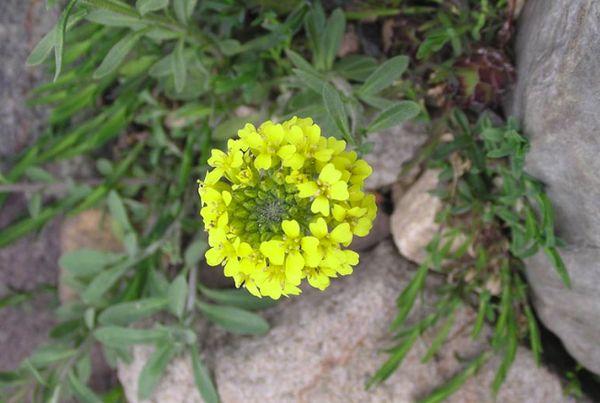
How to prolong flowering
Alyssum bushes, weakened by heat and drought, reanimate. First, watered, then cut out some of the shoots. Leave 5-6 pieces per bush. Prepare liquid top dressing:
- water - 10 l;
- urea - 1 tbsp. l .;
- Agricola-7 - 1 tbsp. l.
After restorative measures, the flowering of alyssum resumes, lasts until frost.
Features of winter planting
Perennial winter hardiness is average. To protect against frost, alissum bushes are covered with fallen leaves for the winter. In winter, snow is thrown onto the flower bed.
Diseases and pests
With good care, alissum rarely gets sick. Outbreaks of brown rot (late blight) occur when irrigation rules are violated. The active reproduction of the fungus is caused by the increased humidity of the soil and air. First, signs of decay appear in the lower part of the shoots, then the plant dries up.
Treat diseased alissum bushes with fungicides. To prevent the spread of infection, diseased and healthy plants are treated. Use drugs "Kuproksat", "Ordan". Watering is stopped for a while.
With an excess of nitrogen in the soil, a large difference in daily temperatures, a white bloom appears on the leaves. This is a symptom of powdery mildew. Infected shoots stop growing and turn black. They cope with the fungus with the help of the preparations "Fitosporin-M", "Fundazol".
Cruciferous flea
In early June, the plantings of alyssum suffer from the invasion of the cruciferous flea. It is a small black insect that parasitizes plants of the Cruciferous family. Pests are frightened off by pungent-smelling infusions. Garlic, wormwood, and makhorka are used for their preparation.
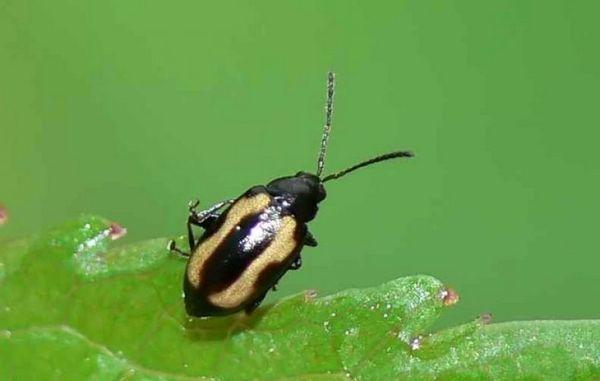
Insecticides are used:
- "Aktara";
- Actellik;
- "Taboo".
Chemistry is used in extreme cases. The drugs listed above are toxic to bees, and alissum is a honey plant.
Caterpillars
From gnawing insects, alissum bushes are treated with infusions of tobacco or chamomile. For better adhesion, liquid soap is added to them.
Cabbage moth and whitefish
To scare away butterflies, the preparations "Entobacterin", "Lepidocide" are used.
Reproduction
Alyssum is propagated by seeds and vegetatively.
Cuttings
Cuttings are rooted in the summer. Prepare a small ridge, fill it with fertile soil. Apical cuttings 10 cm long are planted. The first week they are covered from the sun. Care consists in regular watering.
Dividing the bush
This vegetative propagation method is rarely used in practice. The bush is dug up in the fall. Place it in a container. Store in the cellar until spring. With the onset of warm days, it is divided into several parts. In each section, at least 4 shoots are left. Planted in a flower bed on the same day.

Seed collection
The seeds ripen at the end of September. Dry inflorescences must be harvested from healthy plants by October. Seeds are dried in a warm room before being sent for storage.
Prevention
Removing weeds, regular, moderate watering is the prevention of fungal diseases. Protect from insects by spraying with tobacco infusion.
Combinations with other colors
In the garden, beetroot is harmoniously combined with flower plants. Large flowers of irises, peonies, lilies look advantageous against its background.
Heliotrope
Heliotrope loves the sun, blooms all summer, does not like tall neighbors. Low-growing varieties of alyssum serve as a good addition to it when decorating borders.
Turkish carnation
Carnation is a perennial plant that likes bright lighting, moderate watering. The color of the inflorescences is monochromatic or variegated. Harmonious compositions are obtained from Turkish carnation and alissum.
Pelargonium
Pelargonium, like all varieties of alyssum, blooms all summer. Its bright green leaves and inflorescences look spectacular against the background of a snow-white, lilac or lilac carpet of a blooming groundcover.
Using
A groundcover flowering plant is used to create expressive compositions. A dense blooming carpet of white, yellow, lilac color serves as a background for taller ornamental plants.
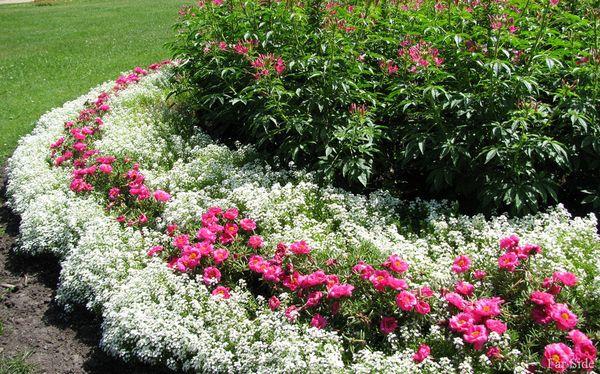
Landscape design
Easy care and long lasting flowering are qualities that gardeners appreciate. Alyssum is often used to create backgrounds.
Alpine slides
For alpine slides, perennial varieties of mountain, rocky, prickly alissum are selected. Medium-sized varieties with a height of 12-25 cm are suitable.
Stony areas
Perennial varieties are planted. The groundcover goes well with large boulders and small pebbles. Against the background of silvery foliage, the texture of the stones is fully revealed.
Mixborders
With the help of undersized species, they create a dense texture resembling a carpet. To create ornaments, varieties with inflorescences of different shades are used. Especially expressive mixborders, decorated in yellow.
Garden walls
Ampel grades are used to design support walls. The flowering plant gives the ensemble a natural, noble look. The silvery green shoots turn a regular wall into a unique object.
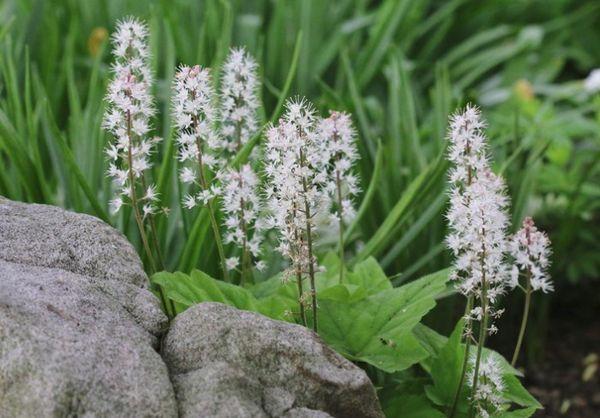
Flower arrangements
The variety of colors makes it easy to create harmonious flower arrangements. The inflorescences of the ground cover plant are well set off by bushes of roses, dahlias, phlox, lilies. In containers, it goes well with zoned pelargonium. On curbs and flower beds, alissum is planted next to marigolds, snapdragons.
Smell
The honey aroma of inflorescences attracts bees, wasps, bumblebees. They pollinate fruit and berry crops, this increases the yield of the garden. Varieties with white inflorescences have a stronger smell.
Healing properties
Burachok has diaphoretic, diuretic and analgesic properties. Inflorescences are used for constipation. It contains organic acids and flavonoids. Drink infusion at high temperature:
- boiling water - 250 ml;
- dry, crushed alissum inflorescences - 1 tsp.
Answers on questions
To preserve perennial varieties in winter, they are covered with fallen leaves. Rocky Alyssum varieties are easier to grow in warm climates. This species tolerates low temperatures worse.
Rare varieties of alyssum can be cut from June to July. The apical shoots take root within 3 weeks. They are planted in a light substrate. Greenhouse conditions are created using a transparent shelter.
Reviews
Elvira, 41 years old, Krasnodar: “I sow alissum seeds in tablets. Seedlings appear on the 5th day. After 10-12 days, I plant the seedlings of alissum in separate bowls. They are small, so I transplant several of them. I put the seedlings under the lamp. I water in moderation. In April I move to the greenhouse. "
Anna, 48 years old, Togliatti: “Alyssum was grown with seedlings. After transplanting to a flower bed, a cruciferous flea ate all the bushes. They came to life by the end of August and blossomed. "
Natalya, 30 years old, Moscow region: “Soot varieties with white and lilac inflorescences. Until May, the seedlings are grown in the greenhouse, then I transplant them to the flower bed. Alyssum blooms all summer. It smells delicious. "

